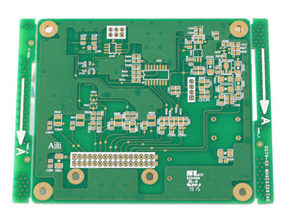The importance of PCBs in the medical industry
Nowadays, more and more medical diagnostics, research methods, even treatment ways have become computerized. Advances in medical and healthcare technology are addressing some of the major issues facing the medical sector, like making it easier to make accurate diagnoses and tracking patient’s health. PCBs are rarely missing from most medical devices, which means the development of medical PCBs has become critical. You can find PCBs in the medical field everywhere.
Reliable and long-lasting components for medical equipment are very important for correct diagnosis and health protection. Because the patient may not get a proper diagnosis if the medical device fails, and if the device is a patient’s life-saving implant, a PCB failure will cause serious health risks. Professional and reliable PCB fabrication plays a pivotal role in the medical industry.
The application of PCBs in the medical industry
PCBs are widely used in medical applications, and their needs are growing continually. According to the application purpose, medical device applications for medical PCB are mainly divided into three categories: diagnosis, monitoring, and treatment.
The PCBs for diagnosis devices
In the modern medical diagnosis process, doctors usually test patients with the help of advanced electronic medical equipment to obtain scientific and reliable diagnostic data, which can be used as a reference for doctors to provide treatment plans for patients. The following medical equipment needs the support of specific PCBs: MRIs, CT scans, electronic stethoscopes, medical diagnostic X-ray machines, ultrasound diagnostic instrument, medical imaging systems, EEG machine, ECG machine, and sphygmomanometer, etc.
The PCBs for medical monitor
Medical monitor devices will help to check the real-time status of patients. The sensors or connectors assembled on the PCBs make it possible for monitoring devices to recording and analyzing the health data of patients, which can provide a data basis for doctors to diagnose the change of condition and determine the treatment plan. PCBs work in these medical monitor devices: blood glucose, blood oxygen meter, body temperature monitors, thermometer, heart monitors, fetal heart rate meter, fat meter, and health scale, etc.
The PCBs for treatment
There are multiple treatment methods in clinical medicine, such as medication, surgery, physical therapy, radiation therapy, psychotherapy, etc. There are big differences between them, but various treatment methods require related treatment equipment, like robots used in minimally invasive surgery, laser therapy instrument, UV therapy instrument, linear accelerator, and so on. Electronic medical equipment has a high dependence on PCBs and even high-density PCBs.
Medical applications cover the essential functions of medical PCBs; more and more medical devices need the support of medical PCBs. Therefore, higher requirements are placed on the reliability and performance of medical PCBs.
The types of PCBs in medical equipment
HDI PCBs
As most medical equipment is small, the internal circuits should be compact to fit the equipment size. Therefore, High-density interconnects (HDI) PCBs are often required in medical devices, for they allow complex circuits in minute boards to fit into small devices. Small size with high performance is the main trend for medical PCBs. HDI PCBs’ development helps meet the accuracy, size, and other unique requirements of these medical applications.
Flexible/ rigid-flexible PCBs
Flexible or rigid-flexible PCBs are often applied in some important medical device designs because many medical devices do not meet the typical standards of size and shape of PCBs. Medical device professionals need to ensure that the PCBs can be accommodated in as small of a space as possible while still being resistant to damage.
What’s more, most medical wearables are made with flexible PCBs because they can be wrapped, folded, and pasted onto flexible parts or areas of the body, which puts forward higher requirements for the flexibility of substrate materials of PCBs.
The continuous improvement of PCB manufacturing technology and substrate performance will definitely promote the further upgrade of electronic medical equipment. More complex and powerful medical equipment will gradually appear in the medical industry. In turn, the upgrade of electronic medical equipment has also put forward higher requirements for PCB manufacturing, which promotes the development of medical PCBs.
NEXTPCB provides medical PCB assembly and medical PCB production for medical companies of all sizes. With years of experience in the medical industry, our engineering team knows every aspect of medical-grade PCBs. They are familiar with related regulations of medical electrical equipment like IEC 60601, ISO 13485, ISO 14971, which can help customers to produce medial PCBs that meet industry requirements.
To produce the best medical products, specific steps need to be taken. Circuit design, packaging, PCB prototyping, mass production are the most important parts. NEXTPCB is capable of providing PCB assembly prototypes and testing with high accuracy and offering professional PCB solutions required in the hospital, dental practice, special care facility, and rescue devices. We have strict quality systems like ISO 9001(2019) to ensure the products with high quality, high reliability, and good yield.
 PCB Assembly
PCB Assembly
 Layer Buildup
Layer Buildup
 Online Tools
Online Tools
 PCB Design-Aid & Layout
PCB Design-Aid & Layout
 Mechanics
Mechanics
 SMD-Stencils
SMD-Stencils
 Quality
Quality
 Drills & Throughplating
Drills & Throughplating
 Factory & Certificate
Factory & Certificate
 PCB Assembly Factory Show
Certificate
PCB Assembly Factory Show
Certificate


